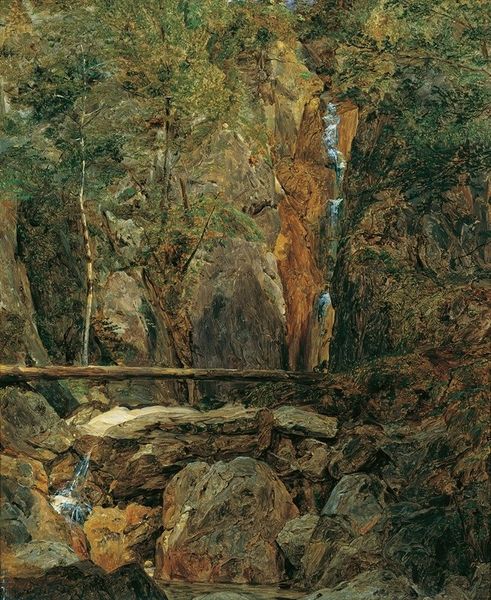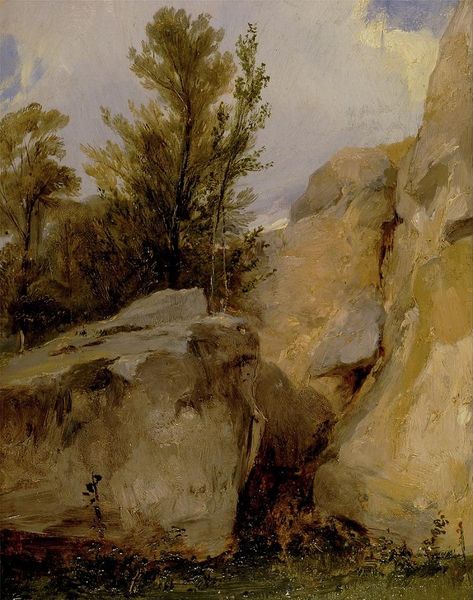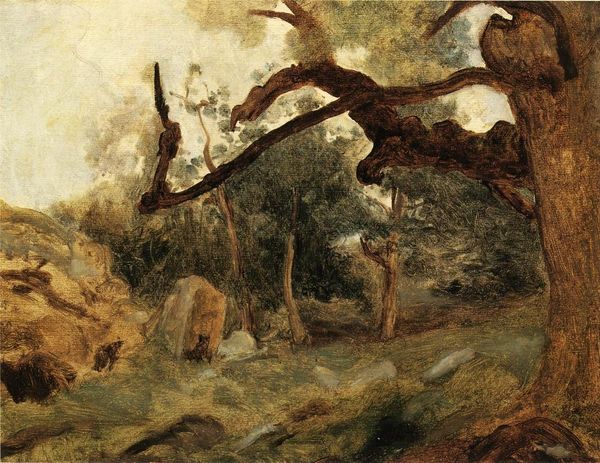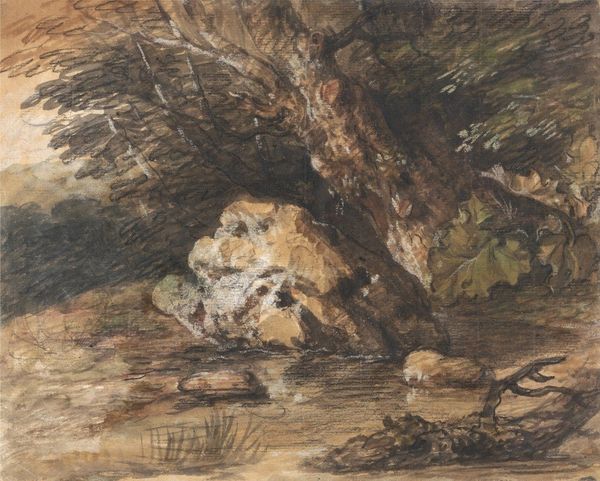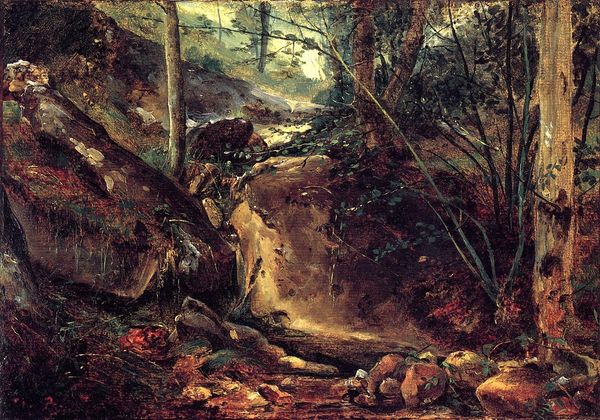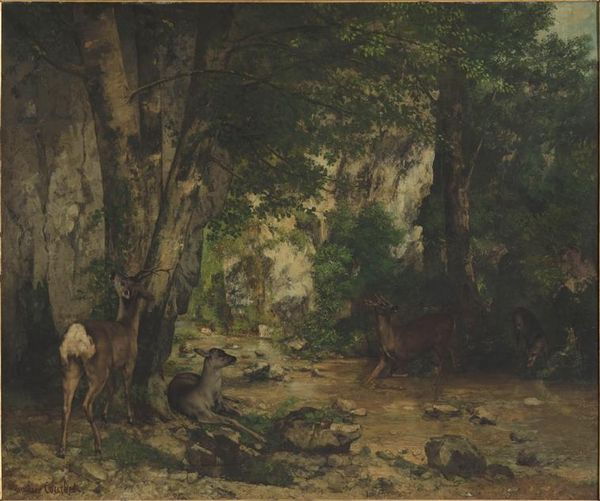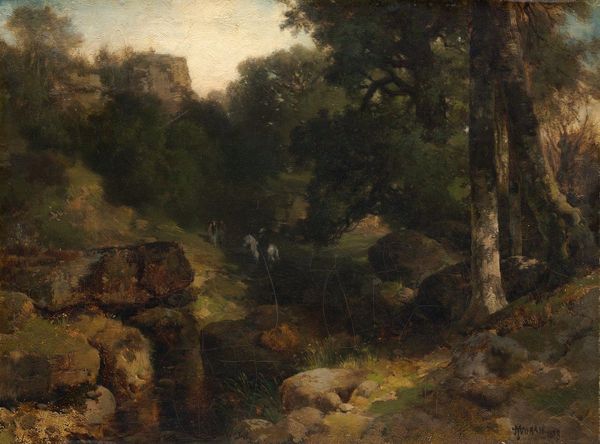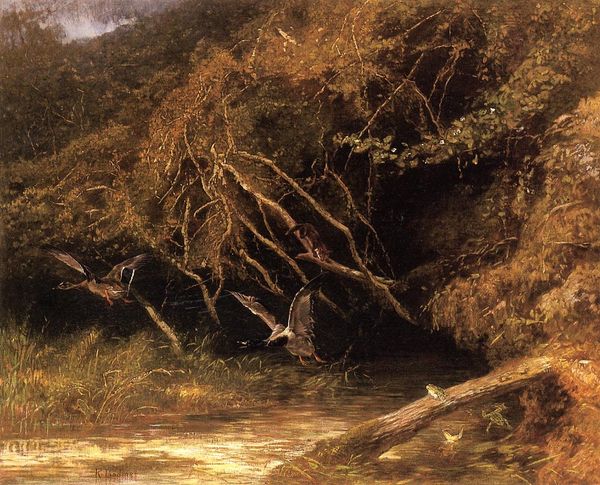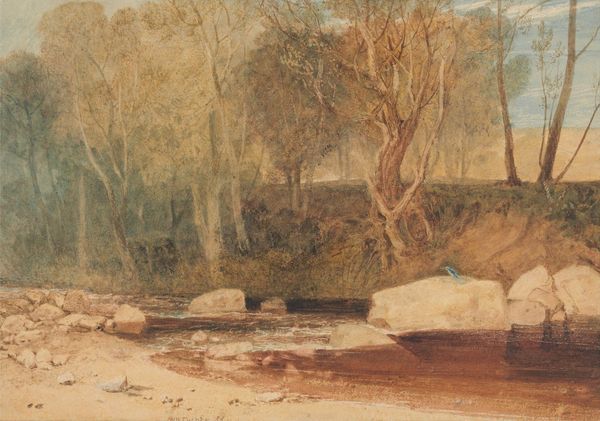
oil-paint
#
oil-paint
#
landscape
#
oil painting
#
rock
#
romanticism
#
realism
Copyright: Public domain
Curator: This is "Study of Rocks" by Théodore Rousseau, painted in 1829. The medium is oil on canvas, and it exemplifies both Romantic and Realist landscape painting of the period. Editor: My first thought? Solid. Monumental, even. Like something prehistoric – a sleeping giant in stone and moss. It really grounds you, doesn't it? Makes you want to touch it, smell the earth. Curator: Yes, absolutely. Rousseau's meticulous attention to detail, particularly in the texture of the rocks and the dappled light, shows his interest in the emerging Realist movement, which prioritised accurate representation and honest observation. He's less interested in heroic landscapes and more focused on the intrinsic worth of humble subject matter. Editor: It’s not just realism, though. There’s something wild and untamed about it. The Romantic spirit is there in the scale of the rock versus the delicate trees, and the play of light and shadow that hints at hidden depths. The surface of this big rock, it seems like a microcosm in nature to me, every moss blotch has it’s place, like the continents on our big earthball. Curator: Indeed. Rousseau’s generation witnessed the rise of industrialisation and the changing social structures, many artists began to find refuge and meaning in natural subjects like this, reflecting anxieties over urbanization and the impact of modernity on traditional ways of life. In Rousseau's work, you often see this deep reverence for untouched landscapes and unspoiled vistas. The rocks would stand firm. Editor: Untouched... yes, but touched by time, weather, growth, decay. The constant making and unmaking of nature. I love how that huge chunk of mineral matter becomes so alive by just being so thoroughly and honestly observed! One can feel the slow labor. And isn't it funny? An artwork with no horizon offers, nonetheless, an incredibly deep view. Curator: It really showcases his keen awareness of the materials and their origins, as well as an emotional and societal viewpoint. He brings into the picture debates around art's function and how art may reflect or shape material conditions. Editor: Well, that really has me looking at rocks in a new light. What else do you think we should look for? Curator: For me, this piece makes us think about our own role in an ecological conversation and how our interactions affect the land.
Comments
No comments
Be the first to comment and join the conversation on the ultimate creative platform.
